By Stacey Abeyta, Andrea Celio, Rebecca Denny, and Leona Hunt
The “stay-at-home” orders and the closures of schools, businesses, restaurants, parks, etc. have turned our lives upside down—upside down in unexpected ways as educators!
We are now being asked to teach our students remotely without preparation and planning. We are now being asked to teach our children at home while teaching remotely. We are now being asked to do all that at the same time that we are under “stay-at-home” orders! Our lives have been jarred by COVID-19.
Our colleagues at Collaborative Classroom were grappling with the questions:
- How do we continue to navigate our work life as well as our parent life?
- How do we engage in working remotely while parenting?
- How do we parent in a way that supports our children’s learning, while working at the same time?
Collaborative Classroom had an idea! We decided to provide a learning space for our colleagues’ children where they could be connected in a community engaged in authentic learning experiences.
Collaborative Classroom had an idea! We decided to provide a learning space for our colleagues’ children where they could be connected in a community engaged in authentic learning experiences.
With that goal in mind, we launched Collaborative Kids. We offered two sessions—one for younger kids and one for older kids, each three days a week. During the first week, the sessions were three hours long including a lunch/snack break (our kids lived across four time zones). After the first week, we quickly realized two-and-a-half hours with a lunch/snack break was perfect.
Through this experience, we learned that what is true in our Collaborative Literacy curriculum is also true in this remote learning setting: a caring, connected community is essential, students thrive when provided opportunities to be independent, and choice is essential to engagement. We’ve gathered our experiences and best practices to share with you!
Collaborative Kids has meant so much to me! It means that my child has gotten to connect with educators and children during this tough time. That has not happened in our district at all so far. It also meant, my child has gotten the kind of education and been a part of a classroom community that I want for her all the time. —Collaborative Classroom colleague and parent
Caring, Connected Community
Connection has proven to be an important aspect to the success of virtual learning and can’t be sacrificed! Here are some of the things we did/learned:
- Creating our learning community norms together and reviewing them at the beginning of each session was very helpful.
- The community was supportive of one another, including holding each other accountable to the established norms.
- Starting and ending sessions with a meeting helps bring our community together.
- Planning time for movement—even short 3–5 minute yoga, stretching, breathing breaks—energized the learners and connected the community in a different way.
To learn more about about our approach to norm setting, read this blog.
You might try this: Provide a time for students to come together virtually to just talk. During Collaborative Kids, that organically happened in the older kids’ group during snack time.
You might try this: Make sure you plan time for the kids to just have fun. For the last 15 minutes of a session, both Collaborative Kids groups came together for a disco party!
Independent Learners
Cultivating independence is another important aspect to the success of virtual learning. Independence provides the opportunity for learners to engage without direct teacher support and heightens engagement. Here are some of the things we did/learned:
- Providing opportunities for students to share their thinking and learn from each other is important to keep them engaged and can be accomplished through whole group, small group, and partner breakouts.
- Young children can quickly learn how to unmute, use breakout rooms, use the chat box, and do virtual work with explicit support, guidance, and accountability.
- We noticed the students took some time to warm up to the independent conversations. Once they knew we would wait for their voices, more shared out.
- Posing a challenge and giving them time to create was something that kept them engaged. The students thrived on the challenge!
- Providing opportunities for students to “drive the learning” by planning time for reflection at the end of each day helps when planning for tomorrow.
Choice
Choice is another important aspect to the success of virtual learning and is important to gaining and sustaining the interest of the learning. Here are some of the things we did/learned:
- We learned so much about the students based on who chose what when we gave them options.
- Engagement was maximized because students loved talking about and investigating topics that they were interested in!
You might try this: Challenge the students to create a “reading fort” that can be a special place for them to engage in independent reading. Here are some of the forts the Collaborative Kids created:
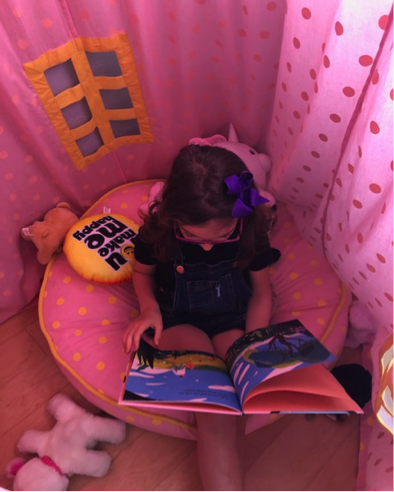
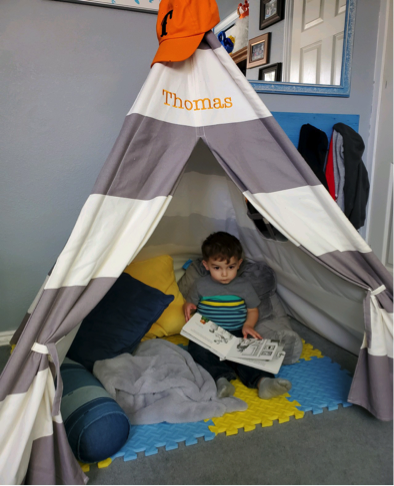
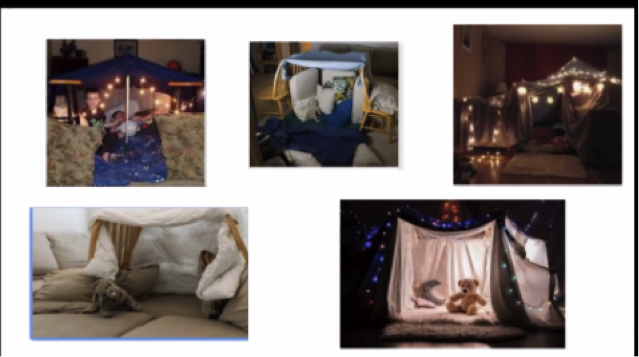
You might try this: Have younger kids create something. The younger Collaborative Kids students were challenged to create something (game, song, project, movie, etc.) that would entertain someone who has been stuck indoors for several weeks. The students were encouraged to talk with their families to get and/or revise their ideas. The students were asked to create a Flipgrid video sharing their creation, explaining what they created, how they created it, and why it would be entertaining.
You might try this: Engage older kids in a nonfiction project. Collaborative Kids students were asked to select a nonfiction topic of choice, research that topic, and present the learning to the group. Interestingly, all students picked an animal. Each student determined how to present their learning:
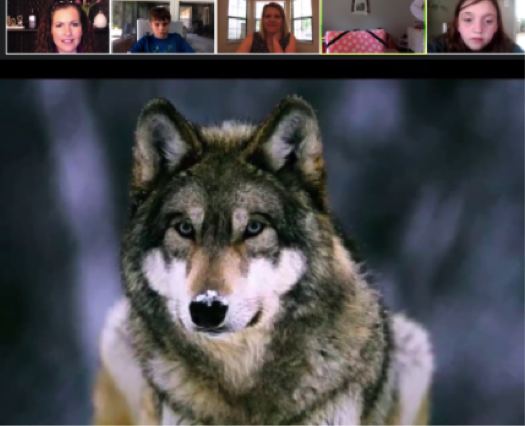
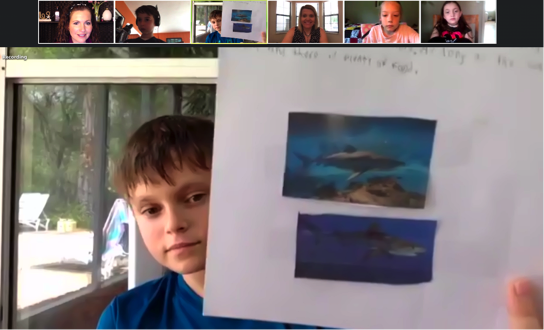
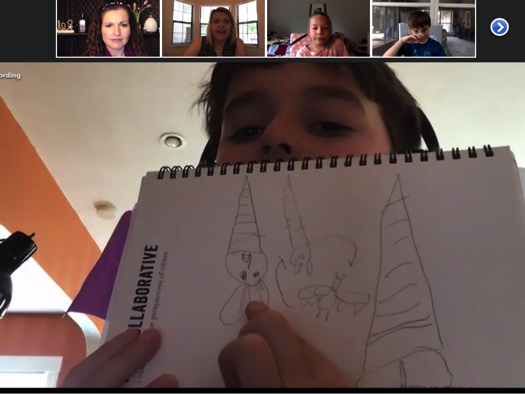
Collaborative Kids was a steady place to be a kid when things turned upside down. The engagement of the kids allowed for parents to find a few hours they needed to get some work done or some much-needed rest.
Collaborative Kids was a steady place to be a kid when things turned upside down.
The power of Collaborative Kids rests in what we know to be true about learning: make connections, make it relevant and fun, and allow for independence. As one Collaborative Kid (Ava, Age 8) put it, “I met new friends, I got to learn new things, and I had fun!”
